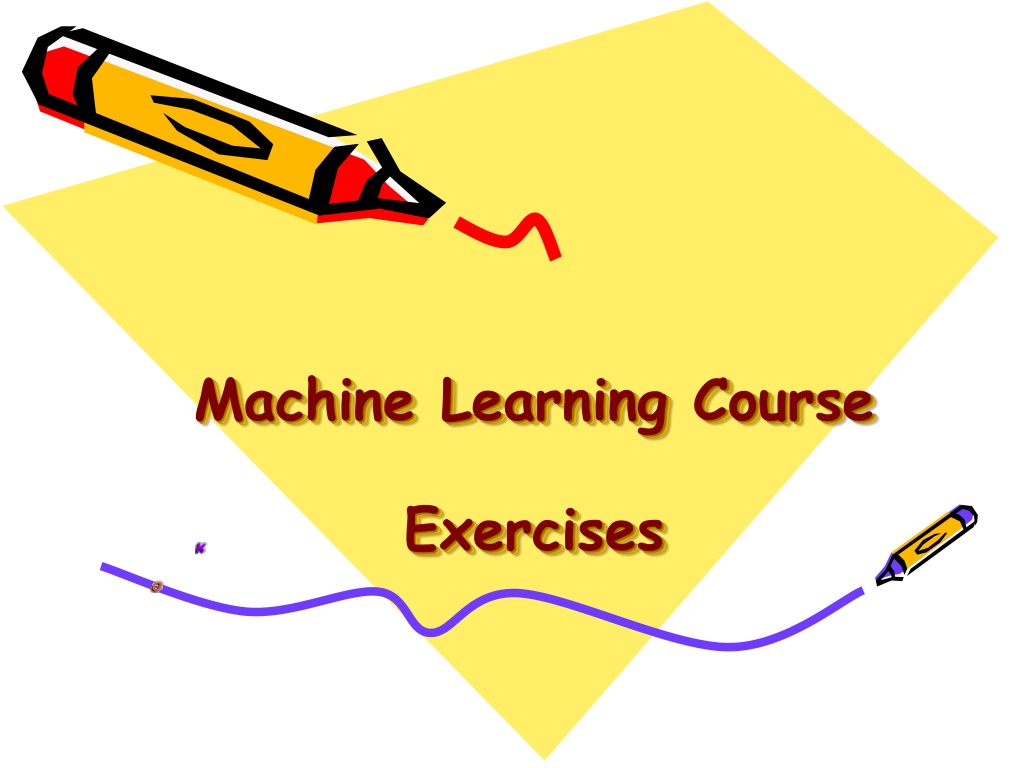Machine Learning Course Exercises Discussion
This set of exercises delves into various aspects of machine learning, including the advantages and disadvantages of using fax versus OCR, limitations of character-matching systems in OCR, detecting junk emails, building automated taxis, conducting basket analysis, and predicting user commands. References to key machine learning books are provided for further exploration.
Download Presentation

Please find below an Image/Link to download the presentation.
The content on the website is provided AS IS for your information and personal use only. It may not be sold, licensed, or shared on other websites without obtaining consent from the author. Download presentation by click this link. If you encounter any issues during the download, it is possible that the publisher has removed the file from their server.
E N D
Presentation Transcript
Machine Learning Course Exercises
Exercises 1. Imagine you have two possibilities: You can fax a document, that is, send the image, or you can use an optical character reader (OCR) and send the text file. Discuss the advantage and disadvantages of the two approaches in a comparative manner. When would one be preferable over the other? 2. Let us say we are building an OCR and for each character, we store the bitmap of that character as a template that we match with the read character pixel by pixel. Explain when such a system would fail. Why are barcode readers still used?
3. Assume we are given the task to build a system that can distinguish junk email. What is in a junk e-mail that lets us know that it is junk? How can the computer detect junk through a syntactic analysis? What would you like the computer to do if it detects a junk e-mail-delete it automatically, move it to a different file, or just highlight it on the screen? 4. Let us say you are given the task of building an automated taxi. Define the constraints. What are the inputs? What is the output? How can you communicate with the passenger? Do you need to communicate with the other automated taxis, that is, do you need a "language"?
5. In basket analysis, we want to find the dependence between two items X and Y. Given a database of customer transactions, how can you find these dependencies? How would you generalize this to more than two items? 6. How can you predict the next command to be typed by the user? Or the next page to be downloaded over the Web? When would such a prediction be useful? When would it be annoying?
REFERENCES Ethem Alpaydin - Introduction to Machine Learning (Adaptive Computation and Machine Learning) -The MIT Press Thomas Mitchell - Machine Education(Mcgraw-Hill International Edit) Nilsson N.J. - Introduction to machine learning Peter Flach - Machine Learning- The Art and Science of Algorithms that Make Sense of Data-Cambridge University Press (2012) learning-McGraw Hill Higher

 undefined
undefined






























